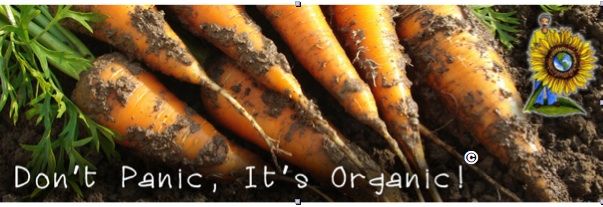Friday, October 16, 2015
Dealing Organically with Phytophthora
Several species of soilborne pathogens in the genus Phytophthora cause crown and root rot diseases can develop Phytophthora rot if the soil around the base of the plant remains wet for prolonged periods, or when planted too deeply. There are many different species of Phytophthora. Good soil drainage, controlling water. In general, Phytophthora requires warm, moist soils for the disease to grow and spread.
Now with the high heat and high humidity, one has a tendency to over water regularly. What this does is that it damages the soil's microbial life causing them to drown basically.
When the good guys go, the bad guys will move in.
We must realize that the soil is a living organism full of a wide variety of actual living little beings each with a specific task. All diseases of plants are soil borne, and so it makes sense to pay attention the Cause and not the Effects. While you must reduce damages from the effects of Phytophora and try to keep your affected plants from dying, it will not solve your problem.
So to prevent and, therefore, control this disease, you must have a living soil.
Why do I talk so much about using Compost? What is it in compost that is so important?
Here are some to name just a few:
Endomycorrhiza: Glomus intraradices, Glomus mosseae, Glomus aggregatum, Glomus monosporum, Glomus clarum, Glomus deserticola, Gigaspora margarita, Gigaspora etunicatum, Paraglomus brasilianum, Ectomycorrhizal fungi: Pisolthus tinctorius, Rhizopogon villosulus, R. luteolus, R. amylopogon, R. fulvigleba, Pseudomonas putida, Paenibacilus polymyxa, Laccaria bicolor, Laccaria laccata, Rhizopogon villosullus, Rhizopogon luteolus, Rhizopogon fulvigleba, Scleroderma cepa, Scleroderma citrinum, Suillus granulatus
Biological Beneficial Disease Control Microbs:Trichoderma harzianum, Trichoderma konigii
Beneficial Microbs: Azotobacter chroococcum, Bacillus azotoformans, Bacillus coagulans, Bacillus licheniformis, Bacillus megaterium, Bacillus pumilis, Bacillus thuringiensis, Paenibacillus durum, Paenibacillus polymyxa, Pseudomonas aureofaceans, Pseudomonas fluorescense -
So do you know what your compost has?
and
Here is one of the most important:
Mycelium
Mycelium is the vegetative part of a fungus, consisting of a mass of branching, thread-like hyphae that are found growing underground. If this present, the plants that grow on it develop immunity to any pest or disease!
A good book to read is called, "Mycelium Running - How Mushrooms can save the world" by Paul Stamets. Whenever you have mushrooms growing, you know you have mycelium. He calls Mycelium "Natures Internet." It is one giant organism, and it communicates with everything connected to it.
Therefore, the most important thing you can do to your property's health is to apply rock dust (minerals) compost(mycelium) and mulch (azalea/gardenia mix cause its acid and protects the soil, keeps pH down).
At the same time, you have to take a look at your watering setup. You need to allow the soil to dry for a few days before it gets watered again. Constant moisture will just cause various diseases to spread while at the same time cause stress in the plants (over watering reduces available nutrients to plants that create stress). Stressed out plants are like a magnet to insects (like ants) which then further spread the disease.
Applying chemicals only will make it worse, in the long run, killing more beneficals and not solve the problem. This is a good time of year to reduce your watering by 20%, while increasing your compost and mulch applications. Next year will start being hot very early and stay hot until Oct when it will cool down. Dont get caught having to water a lot to keep your plants alive!
Andy Lopez
Invisible Gardener
Any questions? Email me andy@invisiblegardener.com
Andy Lopez - The Invisible Gardener --- Click on image to go his website.

Contact Andy Lopez Invisible Gardener 310-457-4438 or call 1-888-316-9573 leave a message.